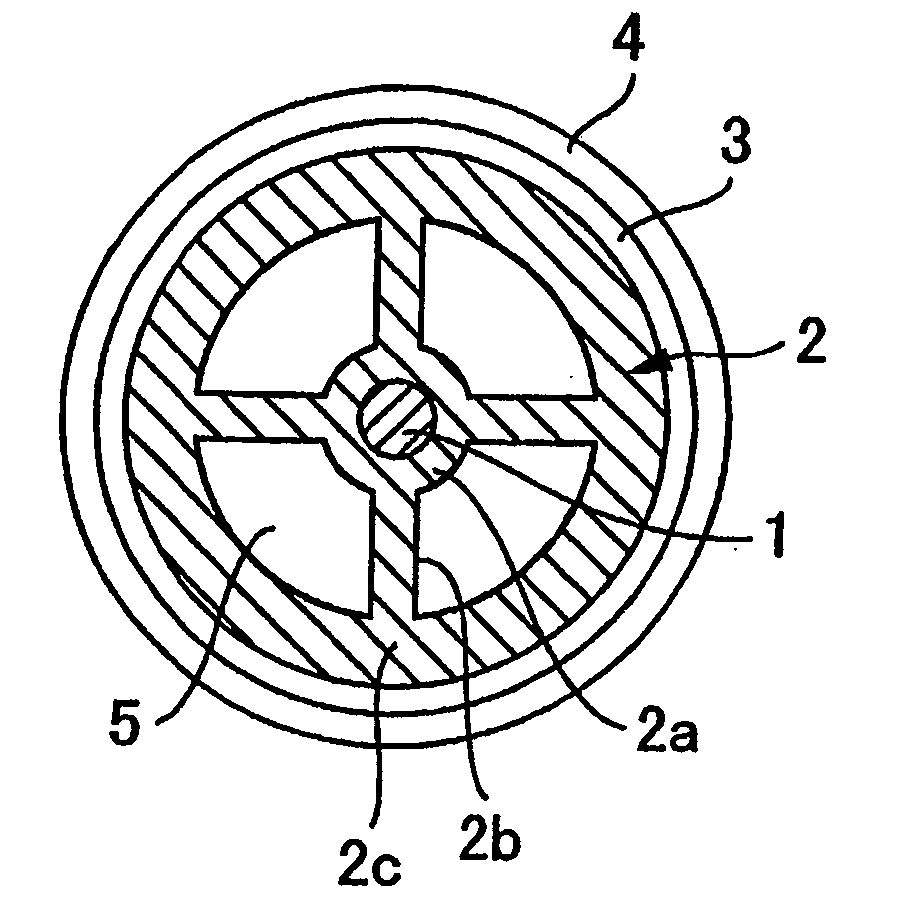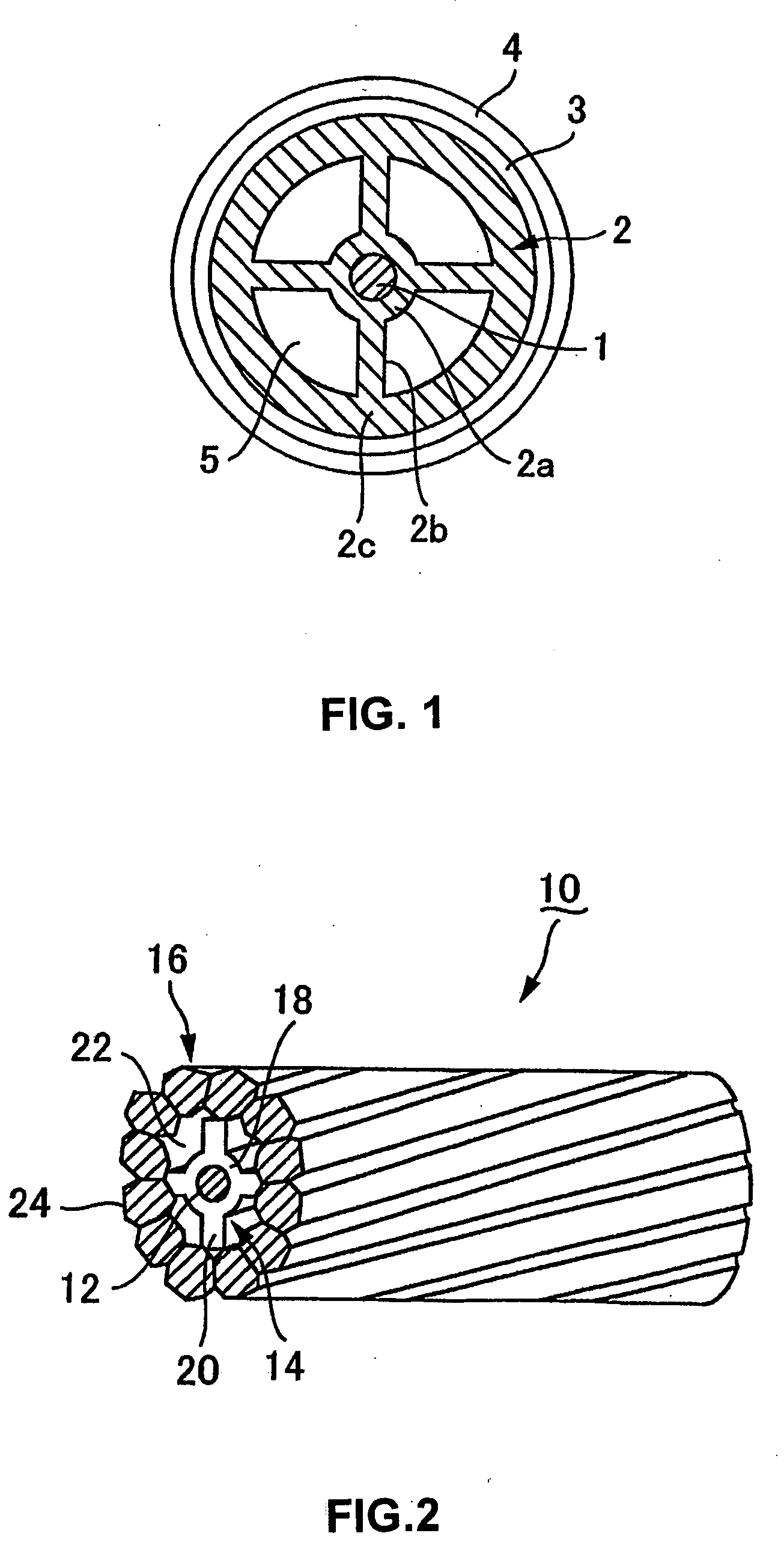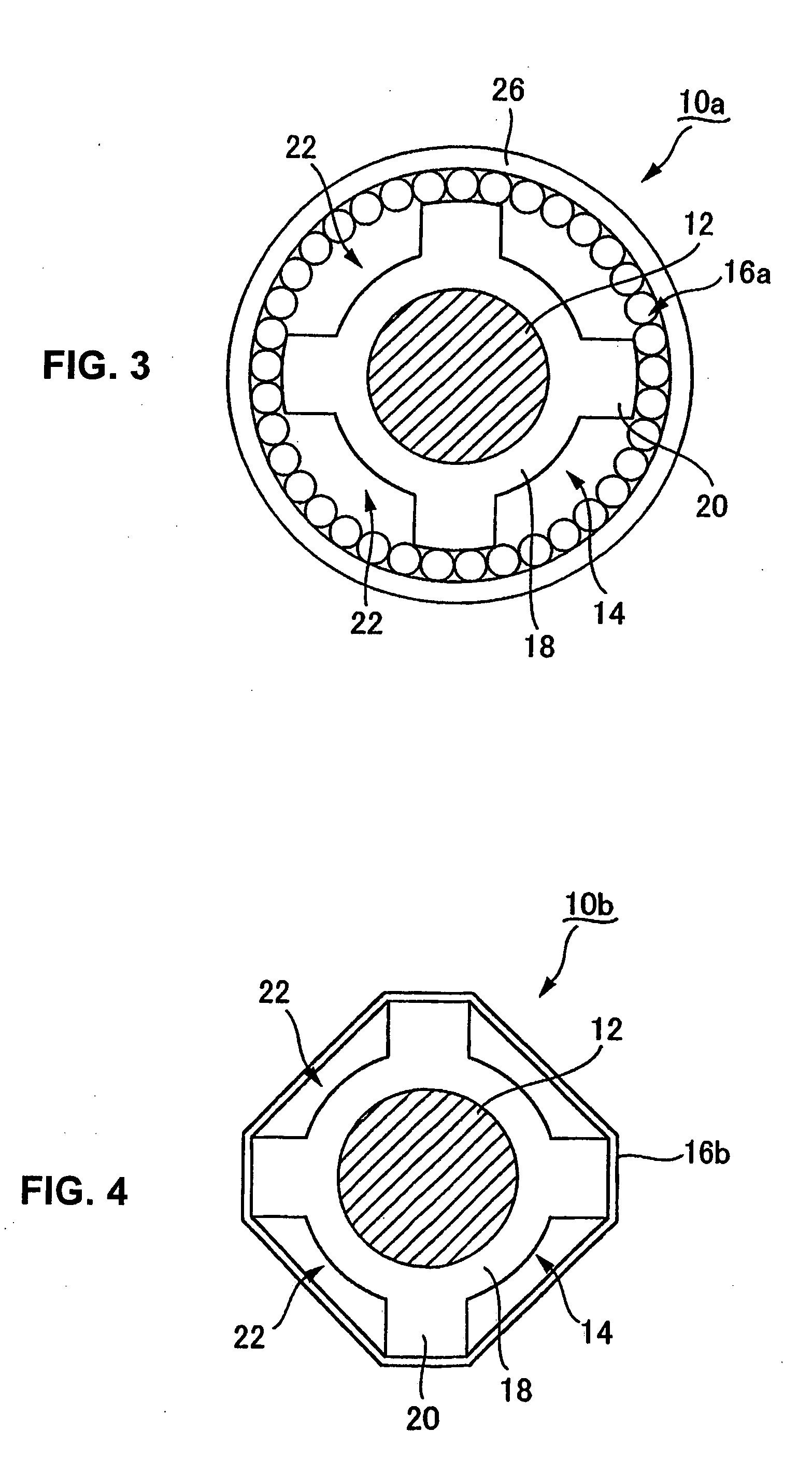Thin-diameter coaxial cable and method of producing the same
a coaxial cable, thin-diameter technology, applied in the direction of cables, insulated conductors, waveguides, etc., can solve the problems of adversely affecting the electrical characteristics of the coaxial cable, the variation of high-frequency characteristics and electrical characteristics, and the difficulty of ensuring extrusion stability, so as to improve the geometric accuracy, increase the size of the resin discharge portion of the die, and increase the molding rate
- Summary
- Abstract
- Description
- Claims
- Application Information
AI Technical Summary
Benefits of technology
Problems solved by technology
Method used
Image
Examples
specific example 1
[0088] The central conductor (silver-plated copper wire having the outer diameter φ of 0.1 mm) 1 was heated, so that the surface temperature became 100° C., by a heater using an electric burner, introduced to a cross head die and inserted through a covering die (nozzle) 30 having the shape shown in FIG. 7.
[0089] The covering die 30 shown in FIG. 7 includes a central hole 30a for inserting the central conductor 1 therethrough, and four radial split holes (resin discharge holes) 30b formed on the outer peripheral edge of the central hole 30a and extending radially outward.
[0090] The inner diameter of the central hole 30a is larger than the outer diameter of the central conductor 1, and once the central conductor 1 was inserted through the central hole 30a, predetermined gaps (resin discharge portions) were formed between the outer periphery of the conductor 1 and the central hole 30a and the resin is discharged into these gaps.
[0091] Also, the four slit holes 30b had substantially ...
specific example 2
[0102] The central conductor (silver-plated copper wire having an outer diameter φ of 0.1 mm) was heated so that the surface temperature became 100° C. by a heater using an electric burner, and then introduced to a cross head die. The central conductor 1, while being inserted through the central hole 30a as in the first specific example, was taken off at the rate of 30 m / min. At the same time, FEP (trade name NP-100 of Daikin Kogyo Co., Ltd.) having a relative dielectric constant of 2.1 was covered by being extruded at the extrusion temperature of 350° C., with a draft, from the resin discharge portions defined by the periphery of the central holes 30a and the slit holes 30b. In this way, a generally cross-shaped intermediate molded component 40 shown in FIG. 8 was obtained.
[0103] Next, the intermediate molded component 40 thus obtained was introduced to a circular pipe covering die and covered by extrusion in annular fashion with cyclic polyolefin (trade name ZEONEX RS820 of ZEON ...
specific example 3
[0107] The central conductor (silver-plated copper wire having the outer diameter φ of 0.1 mm) 1 was heated so that the surface temperature became 100° C. by a heater using an electric burner, introduced to a cross head die and inserted into a covering die (nozzle) 60 in the shape shown in FIG. 10.
[0108] The die 60 shown in FIG. 10 includes a central hole 60a for inserting the central conductor 1 therethrough, and four split holes 60b formed adjacently to each other on the outer periphery of the central hole 60a. The inner diameter of the central hole 60a is larger than the outer diameter of the central conductor 1.
[0109] The four split holes 60b have substantially the same shape and are arranged equidistantly along the peripheral direction around the center hole 60a. These generally T-shaped split holes 60b each include an arcuate portion and a base formed from the center of the arcuate portion.
[0110] The edge of the base of each T-shaped split hole 60b is arranged in proximity ...
PUM
 Login to View More
Login to View More Abstract
Description
Claims
Application Information
 Login to View More
Login to View More - R&D
- Intellectual Property
- Life Sciences
- Materials
- Tech Scout
- Unparalleled Data Quality
- Higher Quality Content
- 60% Fewer Hallucinations
Browse by: Latest US Patents, China's latest patents, Technical Efficacy Thesaurus, Application Domain, Technology Topic, Popular Technical Reports.
© 2025 PatSnap. All rights reserved.Legal|Privacy policy|Modern Slavery Act Transparency Statement|Sitemap|About US| Contact US: help@patsnap.com



